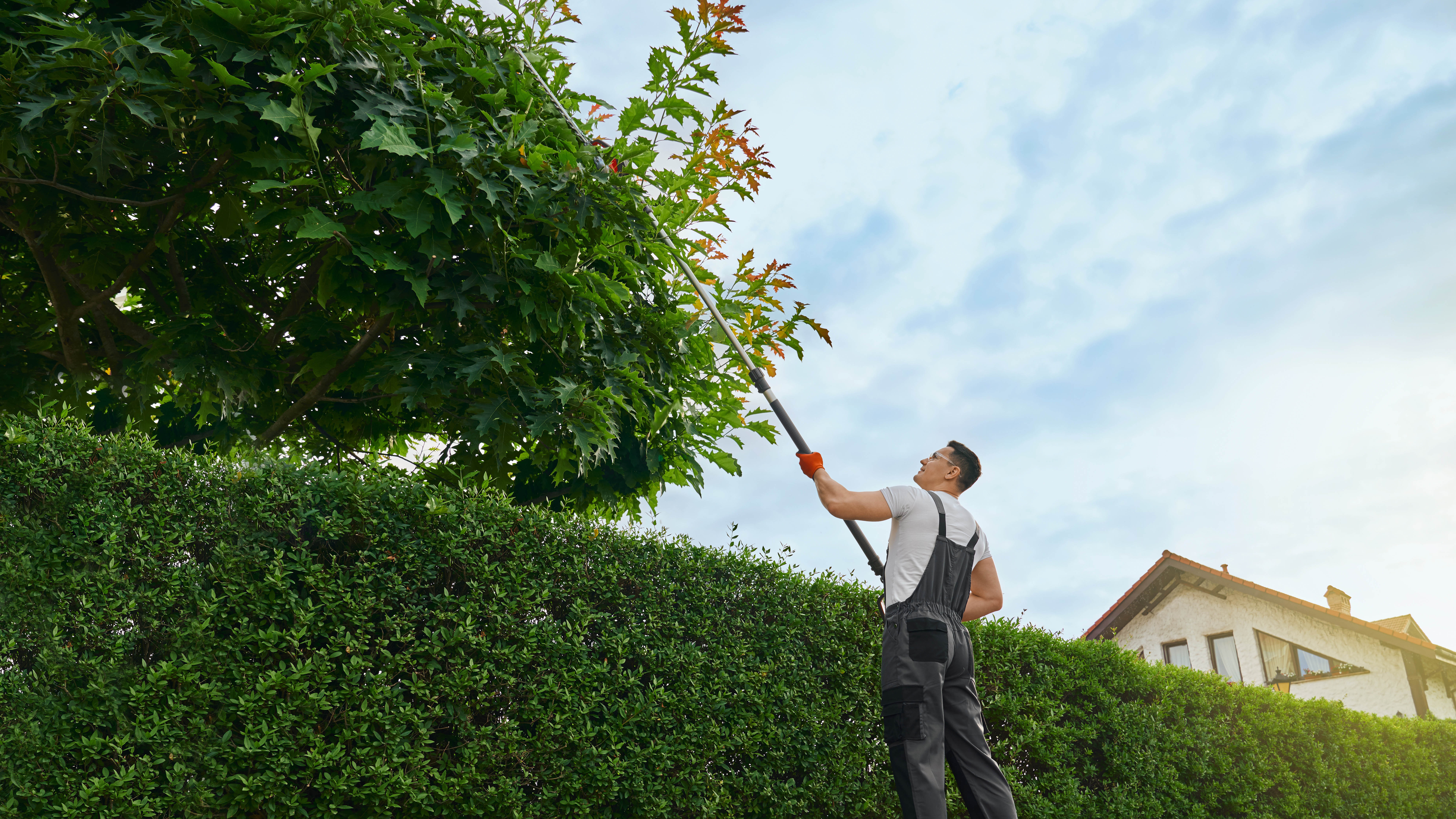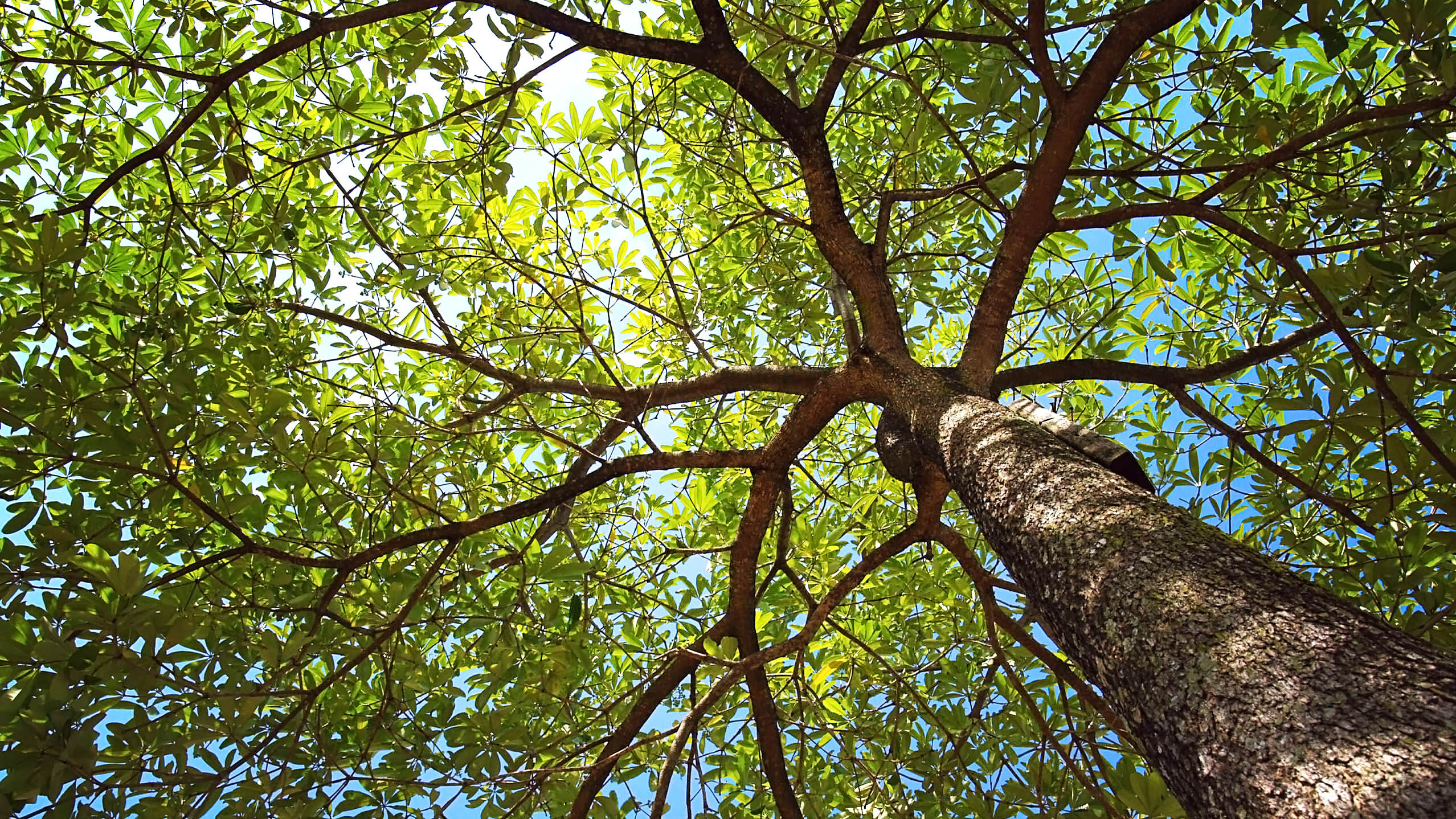Are you allowed to prune your neighbor's tree? I asked the experts
Can you prune your neighbor’s tree?

With warmer temperatures on the way, it’s the ideal time to get outdoors and do those gardening tasks that you’ve put off. Be it cutting back trees and overgrown branches, mowing your lawn or sprucing up your backyard — you’ll want to ensure it’s summer-ready.
But if next door’s overgrown trees or shrubs are "trespassing" into your yard, you’re probably wondering if you’re allowed to prune your neighbor's foliage? In fact, this is a common dilemma for homeowners unsure if they're within their rights to do so. After all, the last thing you want are neighborhood wars!
Luckily, we’ve called on the gardening professionals for their advice and top tips. So before you get out your best pruning shears, here’s what the experts say.
Can you prune your neighbor’s tree?

If you have the overgrown branches hanging over your fences or obstructing your natural light, it can often be unsightly. But, what legal rights do you have to cut it all back?
“Trimming a neighbor’s tree that extends into your property is generally allowed, but only up to the vertical property line,” states Shane Lucado, attorney and founder of InPerSuit Inc.
“You cannot cut beyond the boundary, climb the neighbor’s tree or enter their land without permission.
"You may trim overhanging branches that affect your yard, but if you cause damage to the tree’s structural integrity or reduce its market value — say, killing a $2,500 Japanese maple — you may be liable for those damages. Municipal codes in several counties set fines at $500 or more for unauthorized damage to protected tree species.”
Sign up to get the BEST of Tom's Guide direct to your inbox.
Get instant access to breaking news, the hottest reviews, great deals and helpful tips.
It’s also worth noting that there are different rules by jurisdiction that govern your rights to manage your neighbors' trees.
“For the most part, you are allowed to prune neighbors' trees that are in your airspace (defined by your property line), as long as it doesn't adversely impact the health of the tree,” advises Kaustubh Deo, President of Blooma Tree Experts.
“That can be a bit of a gray area, so if you have any trees that overhang your garden, you should proactively work with an arborist to manage risk of tree failures impacting your garden. An ISA-Certified Arborist will also give you some professional backing that the tree work being done won't adversely impact the health of the tree.”
For those bushes and hedges on your property, the Greenworks 40V 24-inch Cordless Hedge Trimmer can give them the proper trim they deserve. With its 40V lithium battery, you’ll have up to 60 minutes of runtime before it needs a recharge.
Do I need to ask my neighbor for permission first?

Before cutting back your neighbor’s trees or shrubbery, do you need to ask them first?
“In general, it would be best practice to get a neighbor's permission if you can,” adds Deo.
“In some cases, the arborists may require it, especially if they need to access the neighbor's property to safely prune the tree.”
And if you want to go one step further, you might want to take photos of a problematic tree issue.
“Notice is not always legally required, but it is always advisable,” agrees Lucado.
“Sending written notice to the neighbor with a timestamped photo of the overhanging limb, a description of the area impacted, and a request to either address the issue or permit you to trim it helps reduce future disputes.
"If the tree causes measurable harm — such as blocking 70 percent of natural light into a window or damaging your fence — those facts should be stated in clear terms. Keep a record of all communication.”
In any case, if you want to keep the peace and maintain good relations, it’s always best practice to keep things neighborly!
“Though you are allowed to trim what’s on your side of the property line, that doesn’t necessarily mean you should,” states Steve Corcoran, CEO of Lawn Love. “You should always talk to your neighbor first!”
More from Tom's Guide

As the Homes Content Editor, Cynthia Lawrence covers all things homes, interior decorating, and garden-related. She has a wealth of editorial experience testing the latest, ‘must-have’ home appliances, writing buying guides and the handy ‘how to’ features.
Her work has been published in various titles including, T3, Top Ten Reviews, Ideal Home, Real Homes, Livingetc. and House Beautiful, amongst many.
With a rather unhealthy obsession for all things homes and interiors, she also has an interior design blog for style inspiration and savvy storage solutions (get rid of that clutter!). When she’s not testing cool products, she’ll be searching online for more decor ideas to spruce up her family home or looking for a great bargain!
You must confirm your public display name before commenting
Please logout and then login again, you will then be prompted to enter your display name.

